25.08.2023
Hera asteroid spacecraft assembled

Hera is complete. ESA’s asteroid mission for planetary defence was built and prepared in two halves, but now, through a painstaking operation, they have been mated together to make a single spacecraft, ready for full-scale testing of its readiness for space.
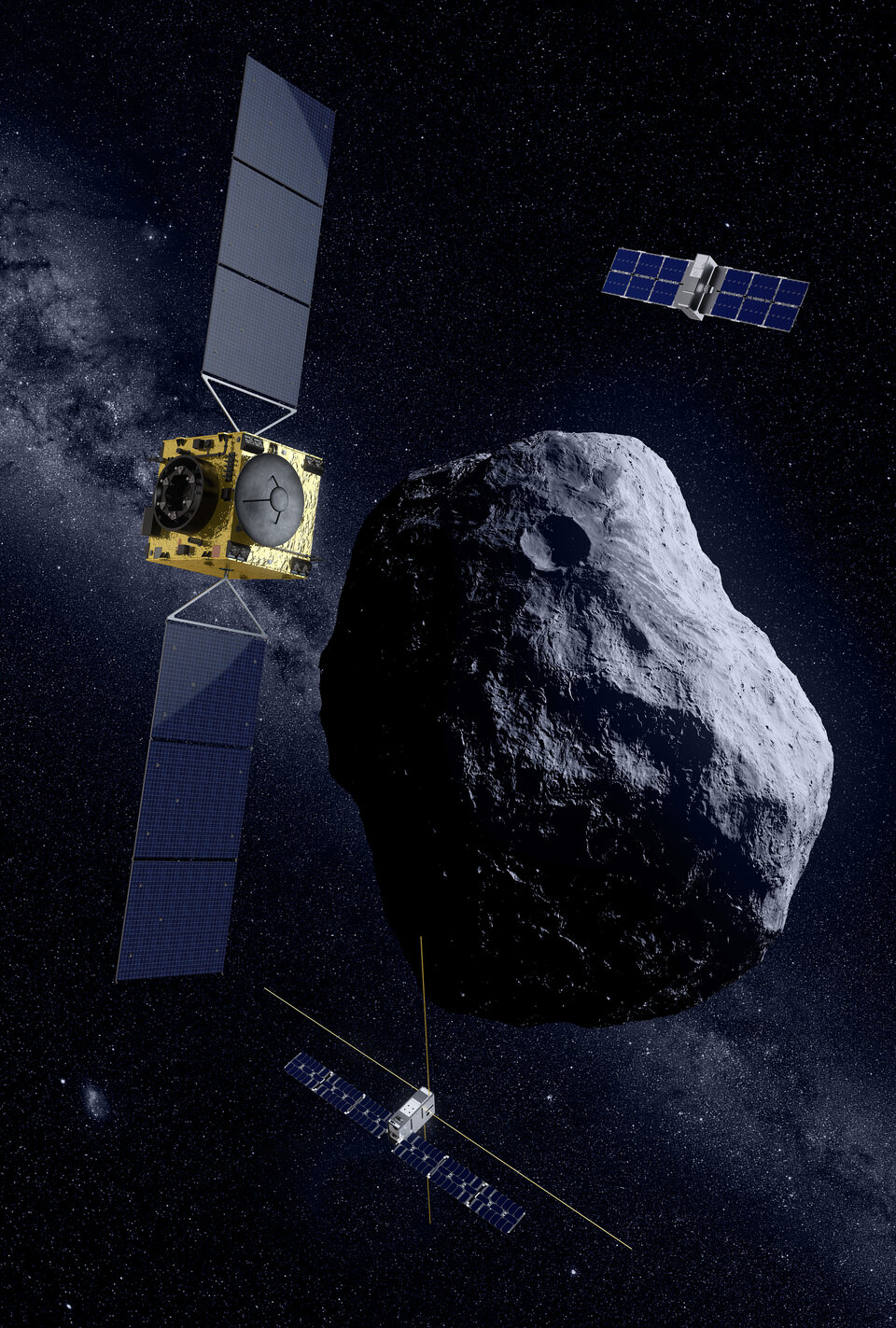
The mating took place at OHB Bremen in Germany, with Hera’s Core Module raised more than 3 m above its Propulsion Module then gradually and carefully slotted into place, over a three-hour period. The modules had been placed in cages to ensure their correct alignment relative to each other down to a few tenths of a millimetre.
“The mission keeps on hitting milestones right now, but this is a big one, and a very emotional moment for the team,” explains Paolo Martino, Hera system engineer. “Previously we had these two modules, now you can say the spacecraft has been born.”
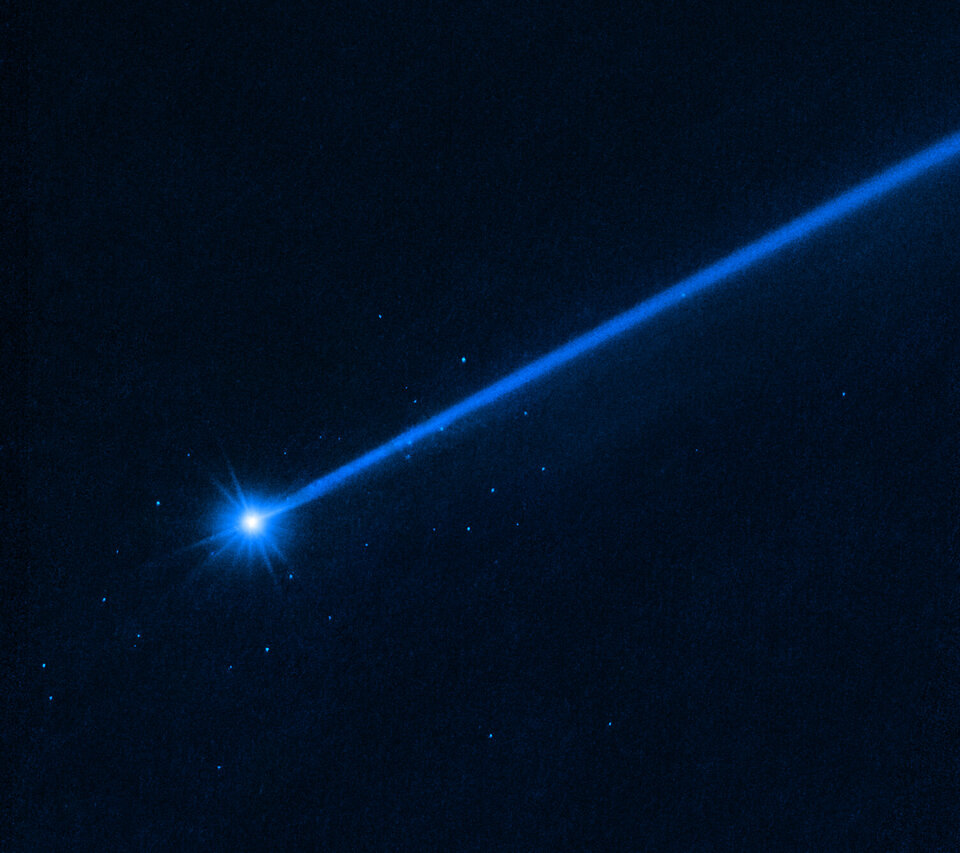
Hera is Europe’s contribution to an international planetary defence experiment. Following the DART mission’s impact with the Dimorphos asteroid last year – modifying its orbit and sending a plume of debris thousands of kilometres out into space – Hera will return to Dimorphos to perform a close-up survey of the crater left by DART. The mission will also measure Dimorphos’ mass and make-up, along with that of the larger Didymos asteroid that Dimorphos orbits around.
To make its rendezvous with Dimorphos Hera has to lift off in October 2024. So to maximise working time the mission was constructed by prime contractor OHB as two separate modules, which could be worked on in parallel.

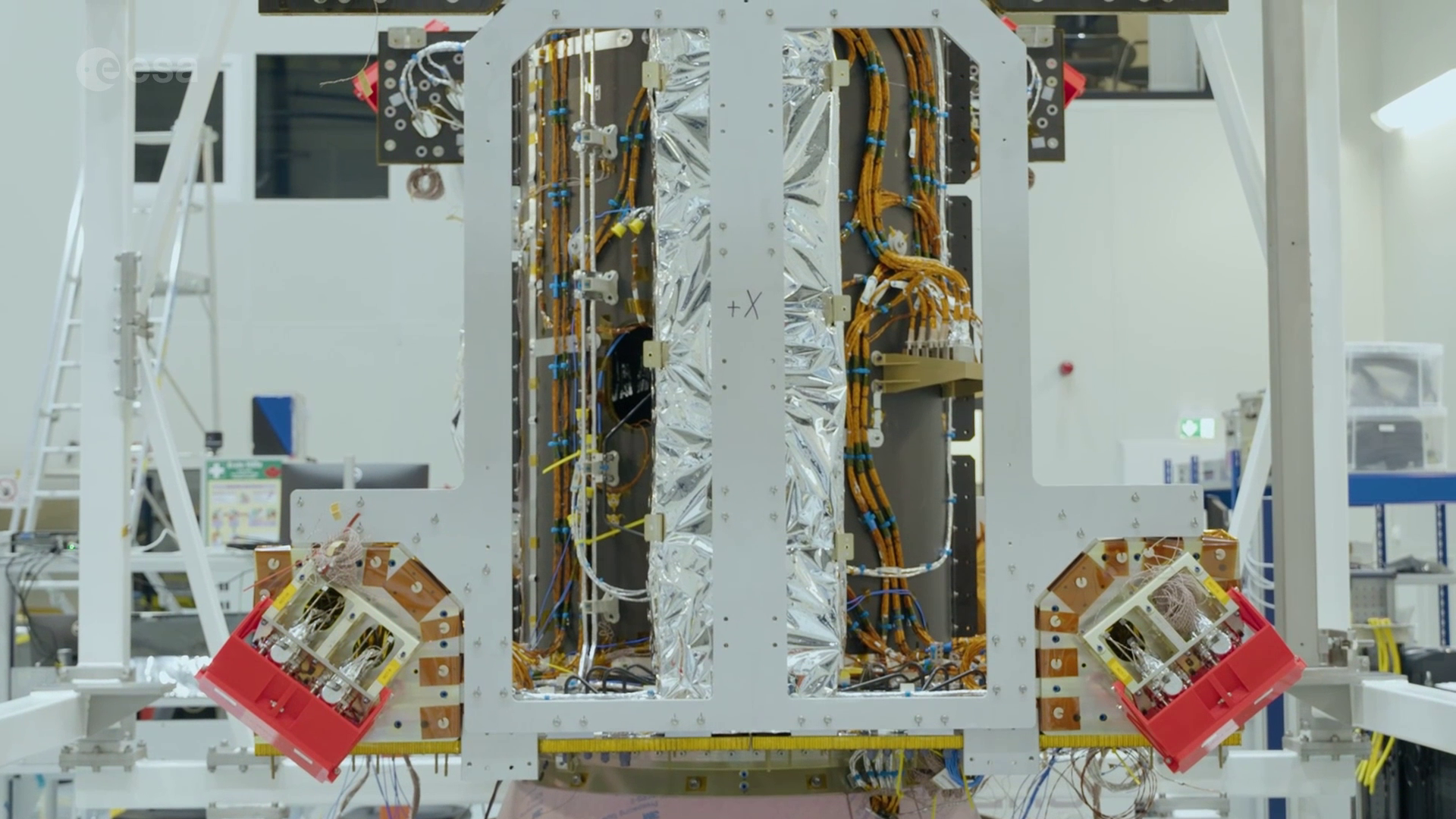
Access the video
Hera’s Propulsion Module incorporates its propellant tanks – housed within a central titanium cylinder, the ‘backbone’ of the spacecraft – along with piping and thrusters, which will have the job of hauling the mission across deep space for more than two years, then to manoeuvre around Dimorphos and Didymos.
Meanwhile Hera’s Core Module can be thought of as the brains of the mission, hosting its onboard computer, mission systems and instruments.
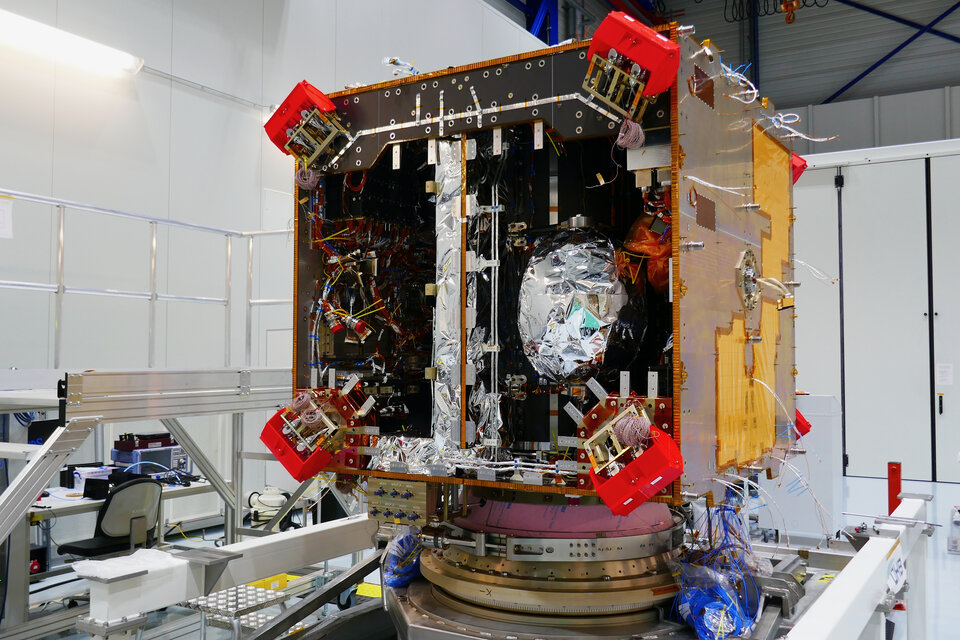
Manufactured together, the Core Module remained at OHB while the Propulsion Module travelled to Avio near Rome in Italy for the addition of its propulsion system. The pair were then reunited in Bremen to prepare for the mating operation.
“A similar double-module process is often used for telecom missions, but those are usually standardised designs,” adds Paolo. “This is the first time it has been applied to a deep space mission, on a much more ad hoc basis.”
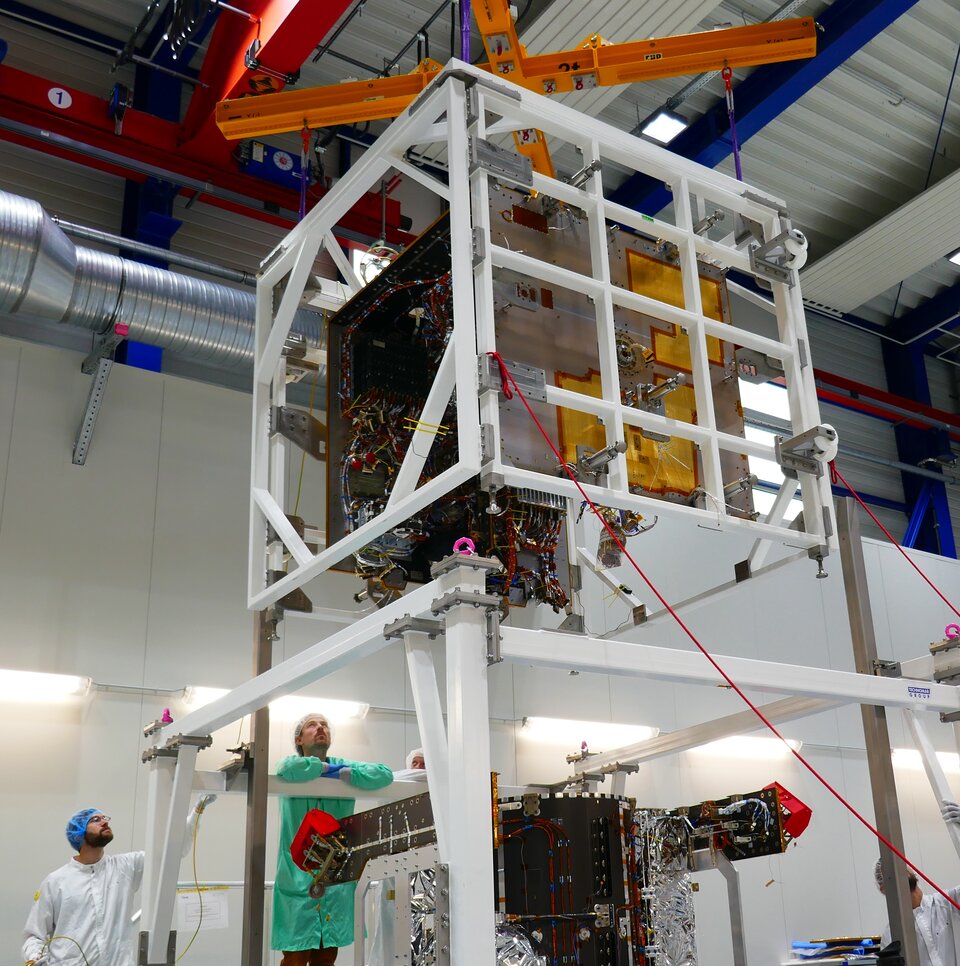
The mating had been exhaustively simulated in advance using CAD software, but OHB’s assembly, integration and testing team were still checking alignment as the crane lowered the Core Module every step of the way. The cleanroom door was kept sealed during the mating to prevent any distraction.
“We studied a lot together with our designers on which were the most critical parts of the process, so most of them were already taken into account,” explains Matteo Grimaldi, Senior Assembly, Integration and Testing technician at OHB.
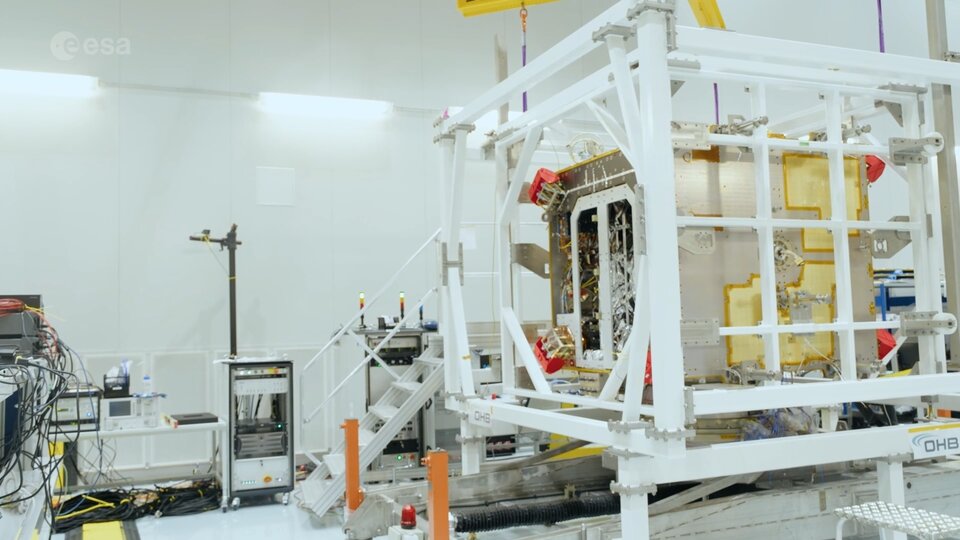
Once the tip of the Propulsion Module cylinder met the top deck of the Core Module the mating was complete. Then an initial test bolt was inserted to check the alignment was entirely correct in advance of the two modules being fully bolted together.
“The two modules are now together forever, as they will be in space, barring any major unexpected problem,” explains Paolo.
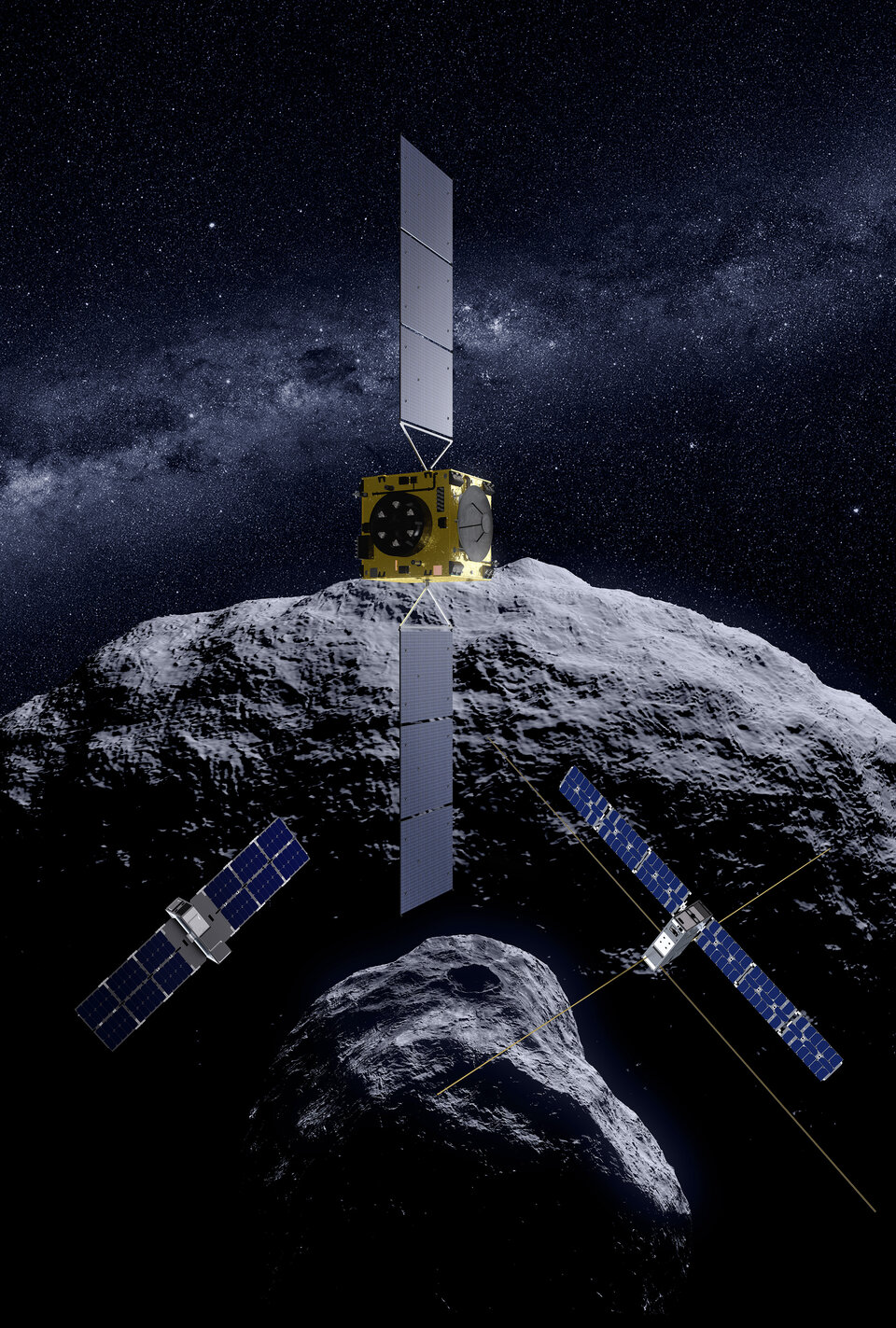
“If we need to, we can still access internal units through side panels. Next we will be adding some payload units to the spacecraft's top deck which we are receiving directly from the manufacturers once Hera moves to its next stop.
“That is at the end of this month, when Hera is being transported to the ESTEC Test Centre in the Netherlands, where it will go through a full-scale environmental test campaign to check its flight-readiness.”

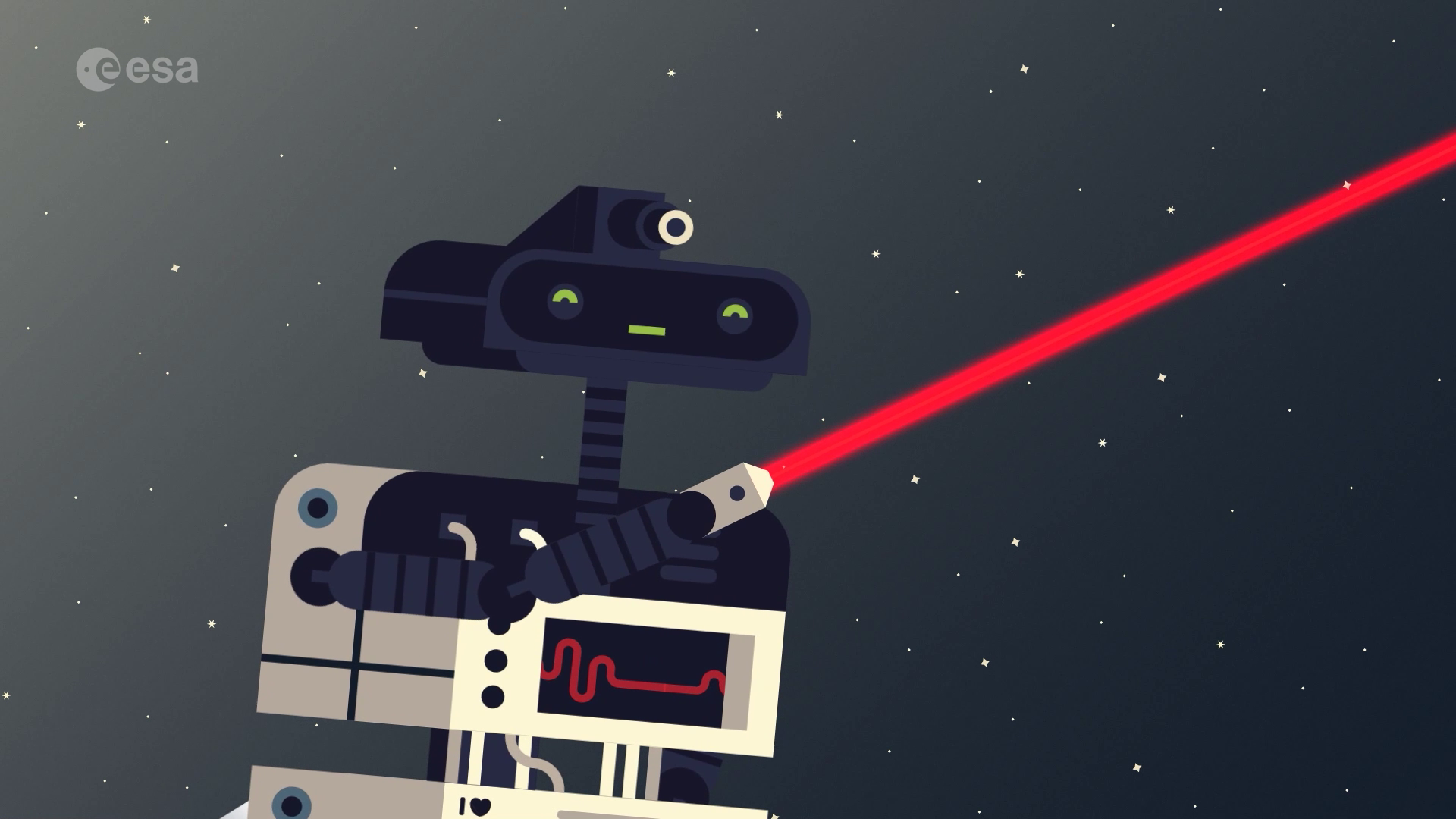
Access the video
Hera takes wing
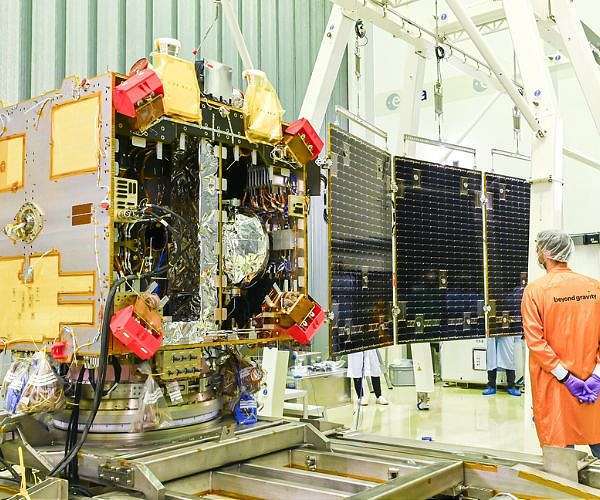
ESA's Hera asteroid mission for planetary defence seen with one of its two solar wings added, during its continuing test campaign at the ESTEC Test Centre in the Netherlands. The van-sized spacecraft, left, is powered by a pair of solar array wings, made up of three panels each, provided by Leonardo in Italy plus Beyond Gravity in Switzerland.
One of these 5-m-long wings was added for Hera's 'cold deployment check' - a manual unfolding process to confirm that the wing fits correctly. Because the solar wings have been designed to operate in weightlessness they were supported by a frame during this test deployment.
Hera is Europe's contribution to an international planetary defence experiment. Following the DART mission's impact with the Dimorphos asteroid last year - modifying its orbit and sending a plume of debris thousands of kilometres out into space - Hera will return to Dimorphos to perform a close-up survey of the crater left by DART. The mission will also measure Dimorphos' mass and make-up, along with that of the larger Didymos asteroid that Dimorphos orbits around.
Near the end of Hera's current test campaign this solar wing deployment will be repeated, this time as a 'hot deployment check' where the deployment is commanded through and implemented by the spacecraft itself, as it will occur in space.
Hera is scheduled for launch in October 2024, to rendezvous with the Didymos and Dimorphos asteroid system. The spacecraft's onboard thrusters - seen here covered with red tags at each corner of its hull - will manoeuvre it through deep space to reach its destination just over two years later.
The facing side of the spacecraft was open during the deployment test because the team was still working inside it, finalising the installation of test sensors. Since then Hera has been sealed and its antennas fitted, allowing mechanical testing to proceed.
Operated for ESA by European Test Services, the ESTEC Test Centre is the largest facility of its kind in Europe, providing a complete suite of equipment for all aspects of satellite testing under a single roof. Hera will be on view to attendees of the ESA Open Day at ESTEC on Sunday 8 October.
Quelle: SD
----
Update: 12.11.2023
.
Hera asteroid mission hears the noise

ESA’s Hera asteroid mission has completed acoustic testing, confirming the spacecraft can withstand the sound of its own lift-off into orbit. Testing took place within the Agency’s Large European Acoustic Facility at the ESTEC Test Centre in the Netherlands. This is Europe’s largest and most powerful sound system, fitted with a quartet of noise horns that can generate more than 154 decibels of extreme noise.
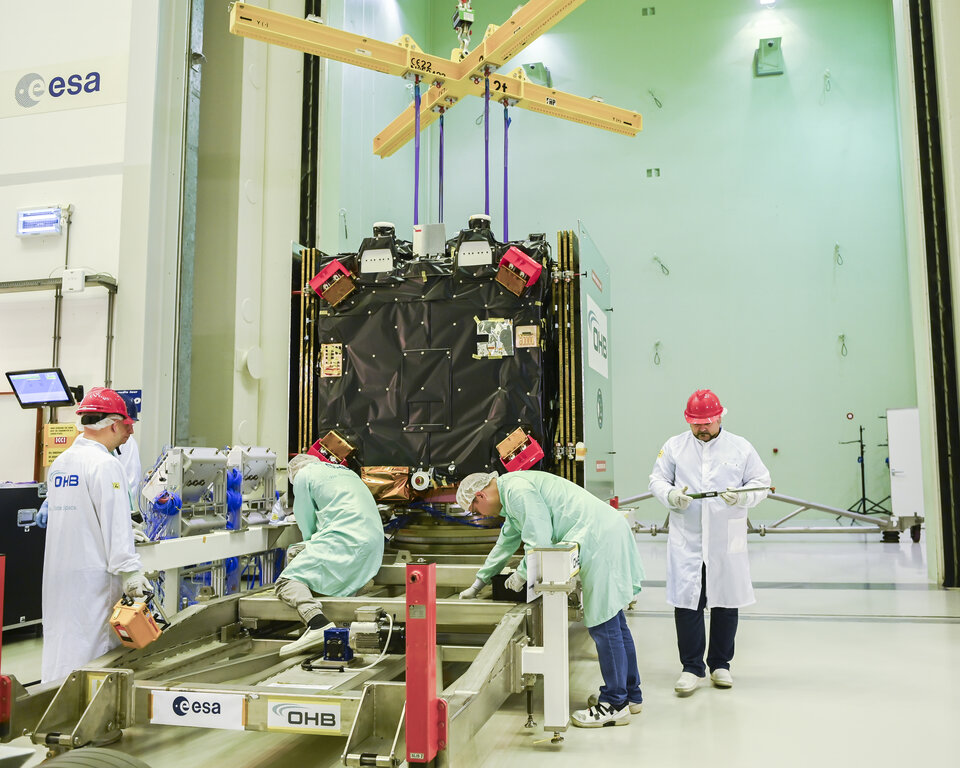
Diego Escorial Olmos, Hera system engineer comments: “Launch will be the single most stressful day of Hera’s life, so we have worked hard to simulate it during our mechanical test phase, first by vibrating the spacecraft on the ESTEC Test Centre’s shaker tables, and now by blasting it with a noise profile sourced from our launch provider, to be as true to life as possible.”
The LEAF chamber stands 11 m wide by 9 m deep and 16.4 m high. One of its walls is embedded with a set of enormous sound horns. Nitrogen shot through the horns can produce a range of noise up to more than 154 decibels, like standing close to multiple jets taking off at once.
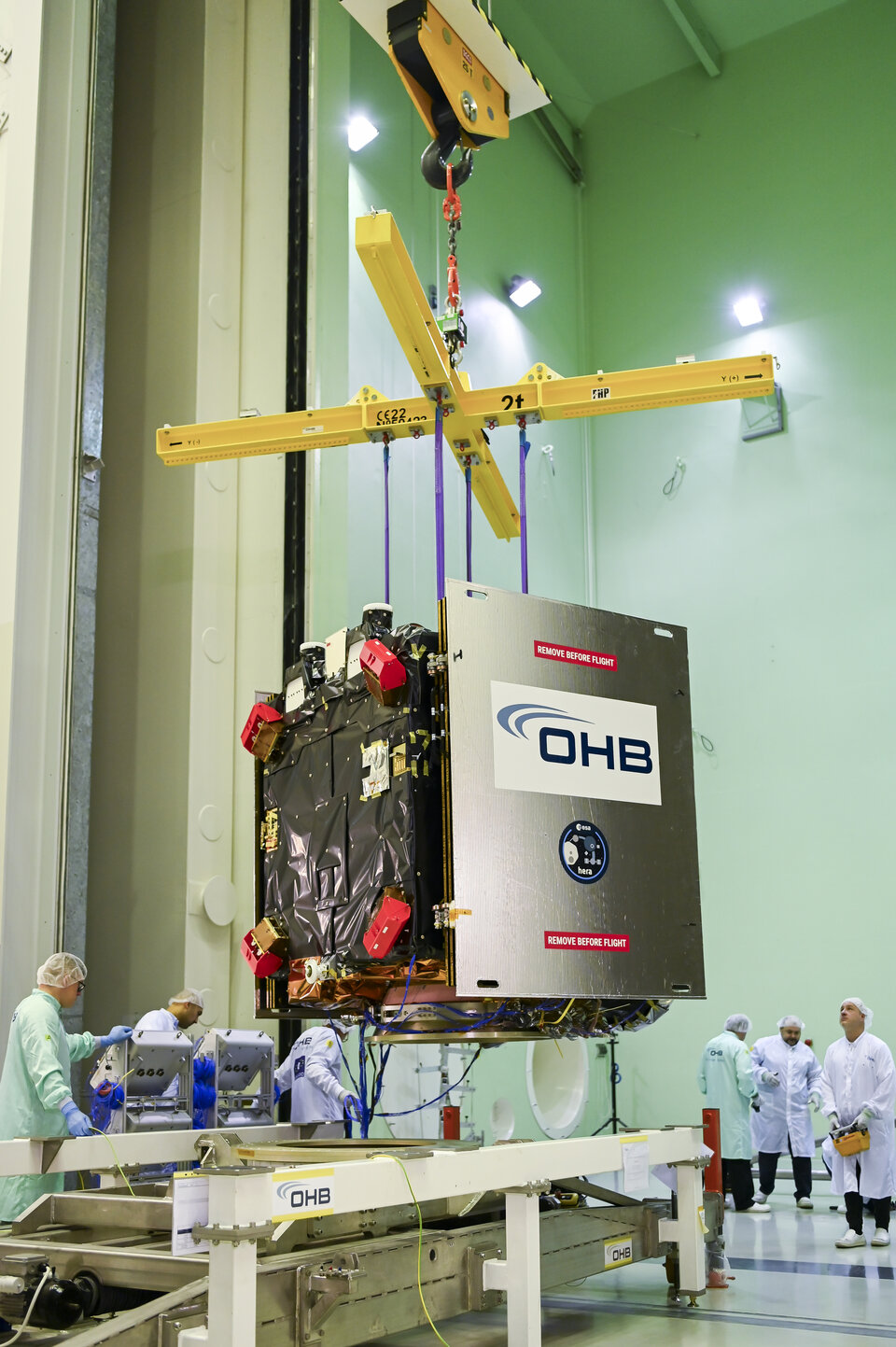
As a safety feature, LEAF can operate only once its doors are closed. Steel-reinforced concrete walls safely contain its noise, which are also coated with epoxy resin to reflect noise to produce a uniform sound field within the chamber. The chamber itself is supported on rubber bearing pads to isolate it from its surroundings, preventing damage to the rest of the Test Centre – or nearby human observers.
Hera was switched on for the test sessions, and placed in launch configuration, with its solar wings folded around its body and its fuel tanks filled with helium, nitrogen and water. Ahead of testing it had been fitted with more than 130 accelerometers to chart the forces exerted on it then ringed by microphones to record the surrounding noise levels, to ensure the tests attain their planned volume.
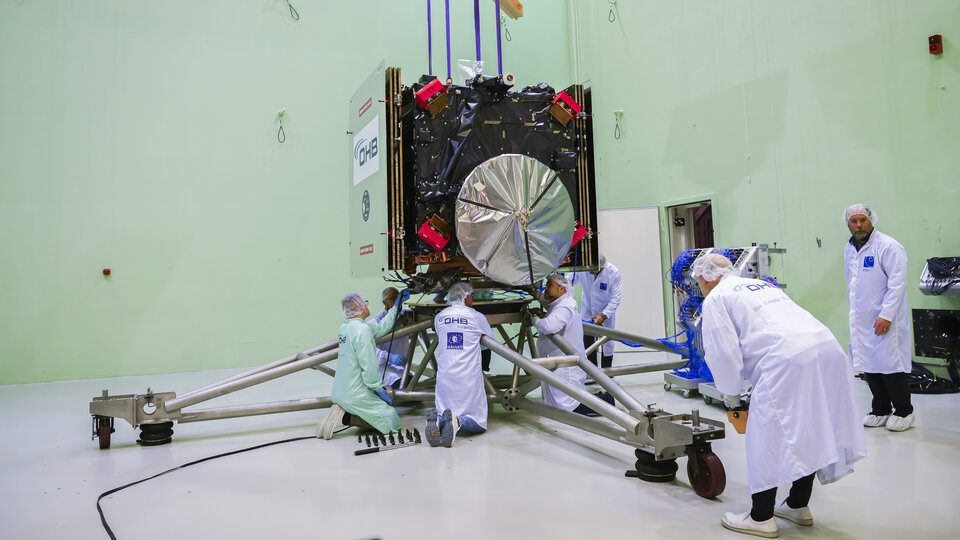
ESA structures engineer Simon Whent, supporting the design of the Hera spacecraft structure and many of its payloads, comments: “Even though this acoustic testing has been exhaustively modelled ahead of time, it was still a nerve-wracking moment as the giant doors of the LEAF chamber close and then the horns are activated. Each test session lasts for just a minute – but that still seemed like a very long time as we waited to find out if Hera’s structure and components withstand the sound waves blasting it.”
ESA mechanical systems and structures engineer Cliff Ashcroft, who led the design of Hera’s central tube ‘backbone’, adds: “In reality, the highest, most damaging levels of acoustic pressure are felt during the early launch phase, generated at or close to lift-off, when the vibrations reflected from the pad and local facility bombard the departing launcher. It is a kind of final acoustic ‘pat on the back’ as the launcher and spacecraft depart from Earth.”

Hera is Europe’s contribution to an international planetary defence experiment. Following the DART mission’s impact with the Dimorphos asteroid last year – modifying its orbit and sending a plume of debris thousands of kilometres out into space – Hera will return to Dimorphos to perform a close-up survey of the crater left by DART. The mission will also measure Dimorphos’ mass and make-up, along with that of the larger Didymos asteroid that Dimorphos orbits around.
Hera is scheduled for launch in October 2024, to rendezvous with the Didymos and Dimorphos asteroid system about two years later.
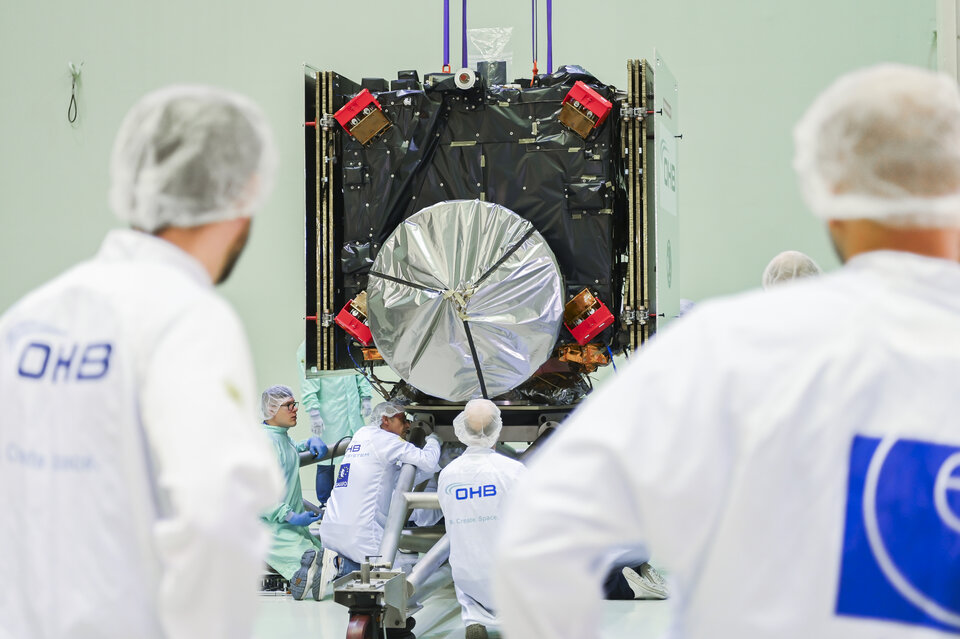
“The successful completion of Hera’s mechanical test phase sets us well on track to meet that deadline, thanks to the collective dedication of ESA’s Hera team, prime contractor OHB and European Test Services, managing the Test Centre for ESA,” comments Paolo Martino, leading the mission engineering team.
“The remainder of this year will see the spacecraft undergoing various functional tests and preparation for its next important testing milestone – sustained operation in space-grade vacuum and temperature extremes within a thermal vacuum chamber, scheduled for early next year, followed by testing of the inter-satellite links that will keep Hera connected to the pair of CubeSats it will deploy in the vicinity of Dimorphos.”

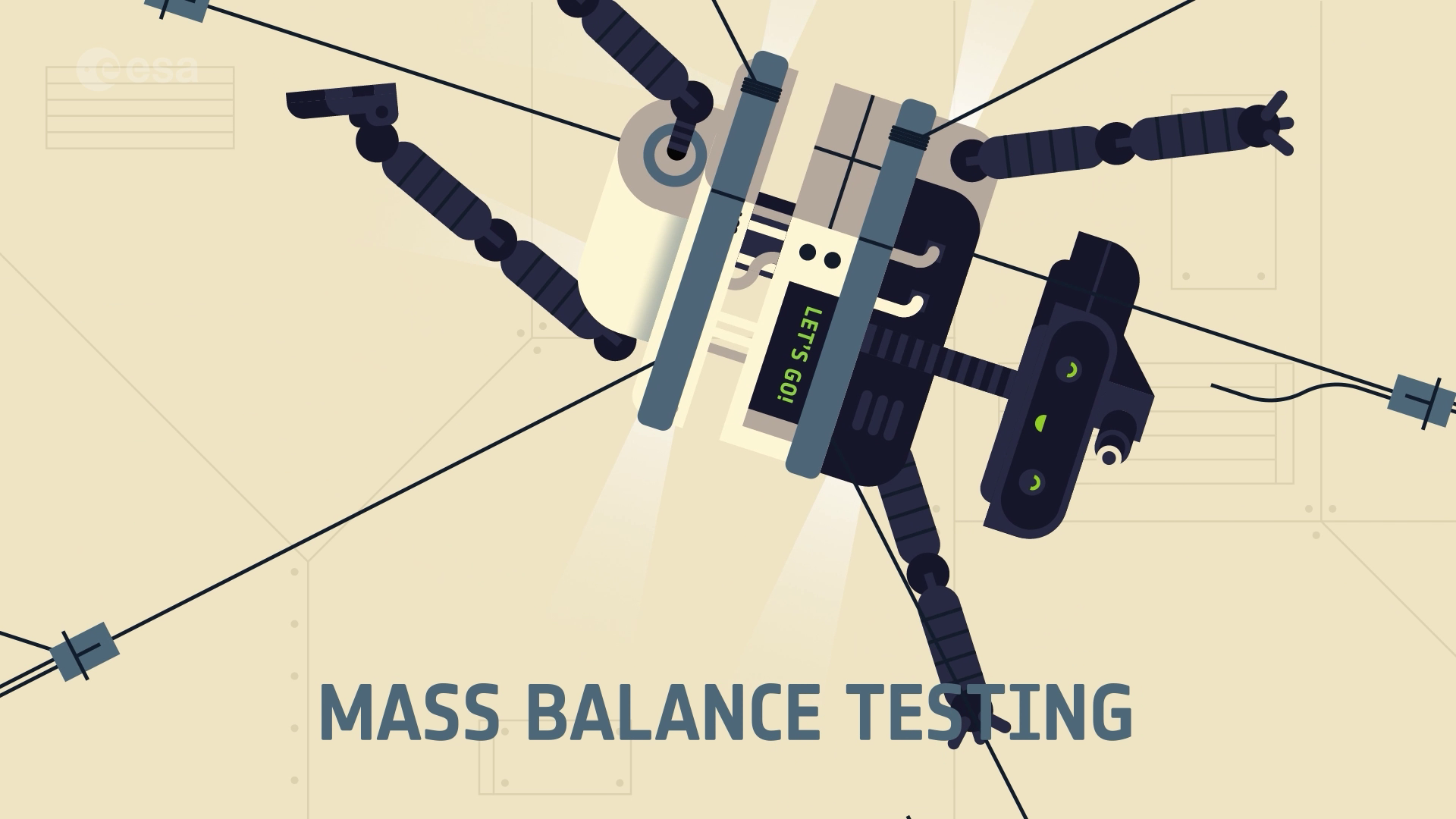
Access the video
In 2024 the Hera mission will revisit the asteroid punched by NASA
NASA’s DART mission slammed into the asteroid Dimorphos in 2022, and the European Space Agency is sending the Hera mission to investigate the collision’s aftermath

Hera, with CubeSats, will soon be heading to the Dimorphos asteroid
ESA/Science Office
The European Space Agency (ESA) is sending a mission to investigate what happened to an asteroid that NASA punched in 2022. The Hera mission, launching in October, will head to asteroid Dimorphos, which NASA hit with its Double Asteroid Redirection Test (DART) mission.
The goal of DART was to check whether smashing a spacecraft into an asteroid would be a good way to defend Earth should an asteroid ever be heading in our direction. We know that the impact shifted Dimorphos’ trajectory around its parent asteroid, Didymos, shortening each orbit by about 33 minutes, but we don’t have details on how exactly that collision affected the asteroid or what happened afterwards.
“We need another spacecraft to go back to the crime scene in order to tell whether the impact left a crater or entirely reshaped the asteroid, because with the current data both scenarios are possible,” says Hera mission head Patrick Michel at the Côte d’Azur Observatory in France. “Hera is a detective that is going to do a complete investigation of the impact.”
The mission consists of one main spacecraft, which will fly as close as 1 kilometre to Dimorphos, and two tiny cube-shaped satellites intended to land on its surface and check it out up close. That investigation will be crucial to simulations of potentially dangerous asteroids and how to deflect them in the future, but it will also provide key scientific insights.
“Collisions play a key role in all the solar system history – we started growing planets by collisions, all the solid surfaces are populated with craters from collisions,” says Michel. “If we are going to build a complete model of the collision history of the solar system, we need to understand how these collisions work.” Hera will help reveal how collisions work in space – and how to make those collisions work for us.
Quelle: NewScientist
----
Update: 9.03.2024
.
Hera asteroid mission vs. absolutely nothing

Hera is Europe's contribution to an international planetary defence experiment. Following the DART mission's impact with the Dimorphos asteroid in 2022 - modifying its orbit and sending a plume of debris thousands of kilometres out into space - Hera will return to Dimorphos to perform a close-up survey of the crater left by DART. The mission will also measure Dimorphos' mass and make-up, along with that of the larger Didymos asteroid that Dimorphos orbits around. Hera is due for launch in October 2024.
In its latest test of readiness for space, ESA's Hera spacecraft for planetary defence is being operated for around three weeks in hard vacuum, while being subjected to the same temperature profiles it will experience during its journey to the Didymos binary asteroid system.
The 1.6 + 1.6 + 1.7 m spacecraft was slid inside the 4.5-m diameter, 11.8-m long Phenix thermal vacuum chamber at ESA's ESTEC Test Centre in the Netherlands.
"You're always a bit nervous when your baby gets moved about," remarks Ian Carnelli, overseeing Hera for ESA. "Right now it's being shut into a dark airless box for weeks on end, but we have confidence it will perform well."
Hera can be seen receded into the rectangular 'thermal tent' within Phenix. The six copper walls of this internal box can be heated up to 100C or cooled via piped liquid nitrogen down to -190C, all independently from each other.
Then, after the main door of the stainless steel Phenix chamber was slid shut, the air within the chamber was pumped out during a lengthy 20 hours process down to approximately one billionth of outside atmospheric pressure. This will allow the Hera team from ESA, European Test Services operating the Test Centre and Hera manufacturer OHB to test the spacecraft's thermal behaviour as the temperature changes around it.
Space is a place where it is possible to be hot and cold at the same time if one part of your spacecraft is in sunlight and another is in shade. And because there is no air, there is no conduction or convection to lose heat from your spacecraft. Instead thermal experts employ insulation and radiators to keep the body of a spacecraft within carefully chosen temperature limits. In general spacecraft electronics - just like their human makers - work best at room temperature.
"We already have detailed models of the spacecraft's thermal behaviour, and this spacecraft-level thermal vacuum test lets us correlate these models with reality," explains Hera's Product Assurance and Safety manager, Heli Greus.
"More than 400 thermal sensors have been placed in and around Hera to give us precise knowledge of what is going on, and the test is being supervised on a 24/7 basis in case anything anomalous occurs. The spacecraft is now being put through a series of 'cold plateaus' and 'hot plateaus' representative of its mission, which will allow us to test the thermal limits of each specific unit aboard."
Hera is Europe's contribution to an international planetary defence experiment. Following the DART mission's impact with the Dimorphos asteroid in 2022 - modifying its orbit and sending a plume of debris thousands of kilometres out into space - Hera will return to Dimorphos to perform a close-up survey of the crater left by DART. The mission will also measure Dimorphos' mass and make-up, along with that of the larger Didymos asteroid that Dimorphos orbits around. Hera is due for launch in October 2024.
The ESTEC Test Centre in the Netherlands is the largest facility of its kind in Europe, providing a complete suite of equipment for all aspects of satellite testing under a single roof.
